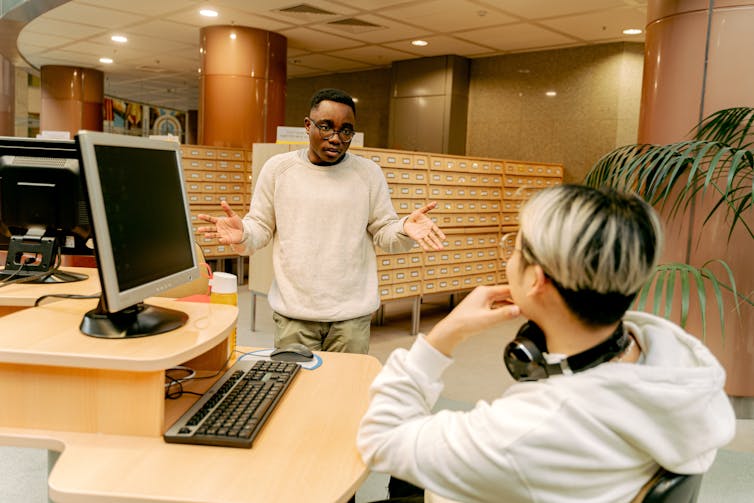Education
Professor flexibility, recorded lectures: Some positive university legacies of the pandemic

A professor’s understanding of how important an accommodation is for one or two students may produce a benefit for all. (Pexels photo)
The COVID-19 closure of university and college campuses and move to online learning in March 2020 was a massive global educational experiment. Many students were severely disadvantaged and strained during the experiment, others coped and some thrived. Educators are divided on its impacts.
With international colleagues who are geography experts, I studied lessons learned during the pandemic. Taken together, the lessons may form the foundation for what post-pandemic post-secondary education could look like in coming decades. Improved educational practices could be one of the few positive outcomes from the pandemic.
The large-scale result is more choice for students in how they are taught with better access for more students. But realistically, the lessons will be applied in different ways by professors, academic departments and institutions to create a patchwork of unique approaches.
New forms of online learning
Specialists in online education distanced themselves from emergency online teaching at the start of the pandemic.
However, improvisation by untrained online educators produced a surprise. Our research documented how some students who had previously taken and hated online courses with slick presentations and high production values found they enjoyed a course with professors who could relate well to students online.
In these cases, topical bad jokes and a peek at the professor’s home office more than compensated for grainy video and poor sound. Some online courses that proved successful continue to be offered by some faculty, even though colleges and universities are now fully open. Students can enjoy the convenience of an online course, and connect with their professor.
Students also quickly learned that online courses don’t need to be taken from home.

(Pexels/Kampus Production)
My anecdotal impression from colleagues in the United States and Canada, including some B.C. colleagues at meetings hosted by the British Columbia Council on Admissions and Transfer — a body that oversees credit transfers between post-secondary institutions — is that online sections are filling up faster than face-to-face sections of the same course in some universities and colleges.
More online components
The online experience also informed face-to-face courses with more thought by faculty on how to engage students during a lecture.
During online learning, course leaders achieved this engagement through online discussion boards and other collaborative tools. That experience carried over for some faculty, and online learning management systems like Moodle and Canvas are now widely used in some face-to-face courses.
Teaching and learning accommodations
Prior to the pandemic, students with learning, mental or physical disabilities had access to “accessibility services” or a similar office in universities and colleges.
The process involved the professional assessment of accommodations necessary for students to succeed in a course, such as extended time for tests, or permission to record lectures. Offices communicated these accommodations to faculty who were then required to implement the accommodation.
Campus closures meant that on-campus support services were less readily available. As a result, some students talked directly to their professors about the challenges they faced.
These challenges were well-known by specialist counsellors and advisors within universities, but confidentiality kept an understanding of student challenges away from faculty.
Learning the specifics about the complex nature of hurdles to learning for some students made some faculty think more about courses and course delivery for all students.
For example, prior to the pandemic, recorded live lectures were available to selected students as an accommodation.
During the online pivot, lecture recordings were popular, and it turned out they were helpful for many students. A professor’s understanding of how important an accommodation is for one or two students may produce a benefit for all.
Some professors continue to record lectures now, even while offering an in-person class.
Reducing student stress
Student mental health became an issue during the pandemic, but there were also rising numbers of students with mental health issues prior to the pandemic. Conversations in the media also made it easier for students to talk about their challenges.
The causes of mental health issues are diverse, but student workload has been increasing in recent years and increased during the pandemic.

(Pexels/Antoni Shkraba)
The transition from face-to-face classes to an online environment encouraged the addition of new assignments to courses, often in addition to the old ones. Some faculty are beginning to rethink not just how they teach, but also their curriculum.
Patchwork of responses
While administrators at universities and colleges are still struggling with post-pandemic responses, many decisions have already been made by individual professors.
Some take attendance at lectures, require assignments to be submitted on paper and refuse to record their lectures or provide copies of their slides. Others are more accommodating. There has never been a more flexible time to be a student.![]()
Terence Day, Adjunct Professor of Geography, Simon Fraser University
This article is republished from The Conversation under a Creative Commons license. Read the original article.






















Jing jing
August 23, 2022 at 10:39 PM
Teaching is important whether virtual, modular or face to face, it becomes effective if the learners learned about your lesson.